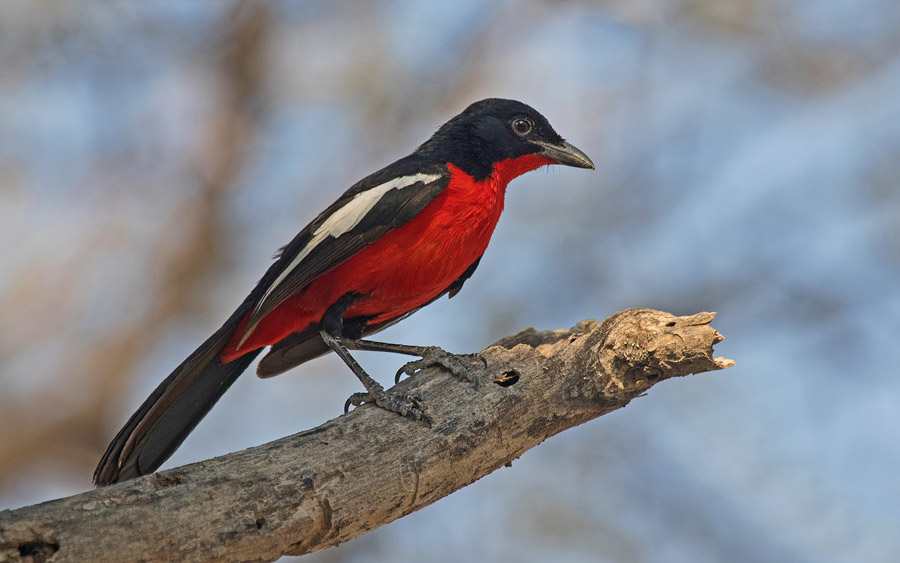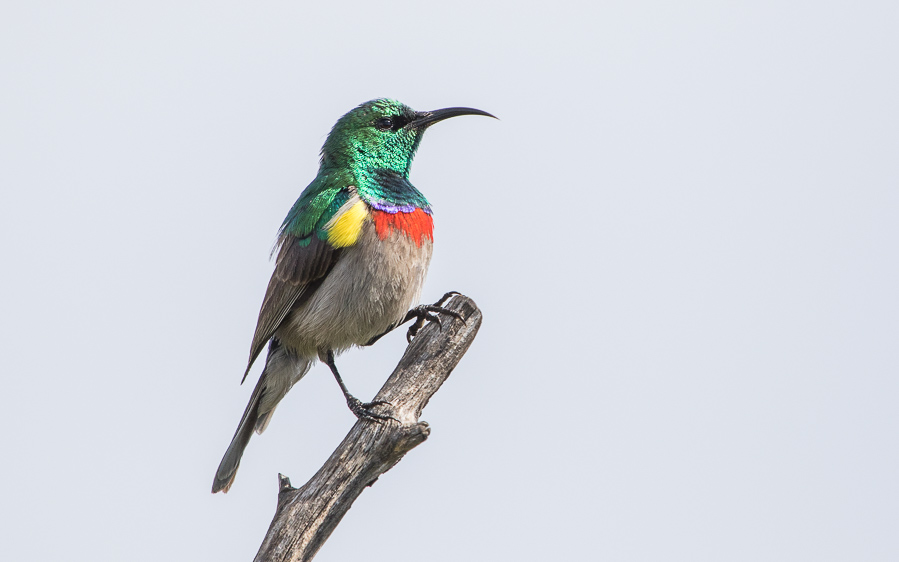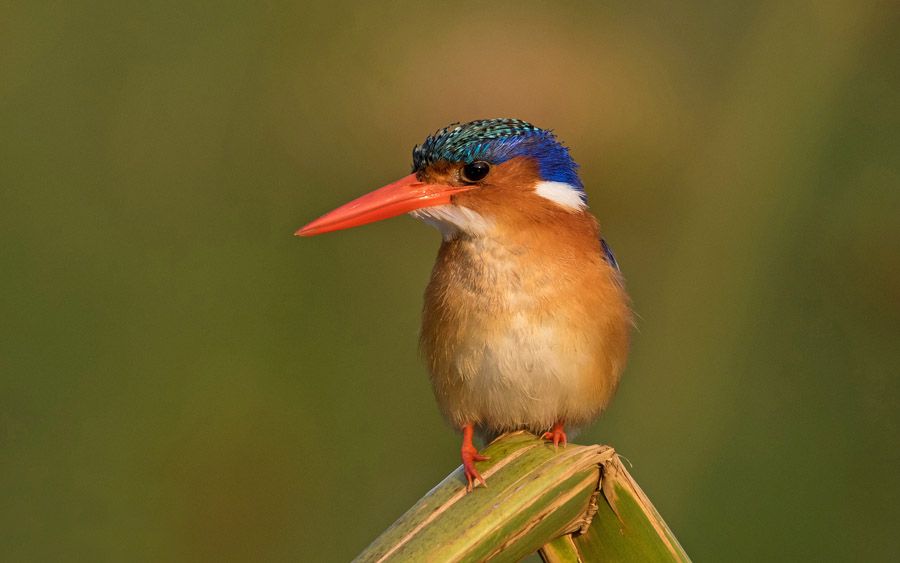Tours by Style
Are you the type of person who dreams about getting a Resplendent Quetzal in your viewfinder? Getting the right light on a Whitehead’s Trogon or a Black-and-Yellow Broadbill, or framing a White-necked Rockfowl just perfectly? We realize that getting that one great picture takes effort and patience, and we plan to allow you to do that.
In countries such as Kenya, Tanzania, South Africa, and India, where the bird and nature photography is strongly vehicle-based, we understand that getting the van or pop-up-roof stretched Land Cruiser into the right light and at the best angle can make all the difference. There’s nothing as frustrating as a driver who goes to the wrong side of the animal or bird and expects you to photograph into the sun. We understand that always having a window seat (with fully opening windows) is a must to get proper photos of birds and wildlife. We certainly want to make sure you get that once-in-a-lifetime shot. Also we understand that having adequate room in the safari vehicle to keep your camera gear next to you and at the ready is important, so we keep empty seats in our vehicles for photo tours. Of course the pace of a birding photography trip is also much slower than that of a normal birdwatching tour in which photography is not the main aim. Bird photography takes patience, and a lot of time has to be spent with each bird.
Our birding photography tours are thus essentially run as slower-paced birding tours that allow ample time for photographing birds and animals, rather than heading off to tick the next species. Once we have found our interesting birds or animals the idea is to then spend more time ensuring we get the right angle and light on our subjects until you are satisfied with your shots. We are less likely to spend hours and hours waiting to photograph a particular species but will rather ensure we have adequate time to photograph each new species that we find before moving on. Although we can of course arrange bespoke photography tours and spend even more time waiting for target species to show themselves perfectly for photographs.
Read More
Many of us are birding (and nature) photographers ourselves and will take the time to maneuver you into the right position to get the photo you want. Although we specialize in birds we also love getting great shots of mammals, lizards, snakes, crocodiles, dragonflies, butterflies, and a myriad more, and we know where to go to get them. We know the animals and where to find them, and we know how to get you into the right spot for a memorable photo. Come join us on one of our fantastic bird/nature photography voyages around the world. Many of our tours are specialist birding photo tours, but others are less focused on birds – please ask us if in doubt.
Sites/lodges with bird feeders can be extremely beneficial. For example, hummingbird photography is incredibly productive at comfortable lodges in Costa Rica, Ecuador, Colombia, and Peru. Some of the best hummingbirds on the planet visit feeders. For example, extravagantly beautiful Marvelous Spatuletail hummingbirds can now be seen and photographed at feeders in northern Peru (this is a localized Peruvian endemic). We also thoroughly enjoy species such as Rufous-booted Racket-tail and other jewels at the Cock of the Rock Lodge and other accommodation establishments in the cloud forest of the famed Manu Road of Peru. In Cuba we go to a household where a local family feeds the smallest bird on the planet, Bee Hummingbird, giving a great opportunity to photograph it. We should mention here that of course many bird photographers don’t want to see their birds on human-made perches or feeders, but birding-photography-oriented lodges are often aware of this, so they put out natural-looking perches nearby.
A lot of the South American, Central American, and Caribbean lodges we use, such as the southern Amazon’s Cristalino Lodge in Brazil and Serra dos Tucanos Lodge also in Brazil, are incredible for photography. In Cuba, Ecuador, and other places “trained” antpittas come and eat mealworms that locals put out, providing incredible photographic opportunities of species that are otherwise incredibly tough to see, let alone to photograph.
Great photography options are available on all our set-departure tours, and most of our birding guides are serious photographers themselves. A few of our small-group set-departure tours also are purely photographic tours, where photography is more important than species count and time is allocated to get exactly the picture you dream of. If we don’t offer a photo tour to a country you are interested in, please contact us. We will run any of our tours as photographic custom tours at any time, or we can arrange a bespoke birding/wildlife photographic itinerary for you, centered exclusively on your photographic needs and wants.
We’ve had tour participants who are also very interested in sound recordings, and we can run birding tours focused on getting bird sound recordings for xeno-canto/eBird or personal use if you want. We really enjoy arranging bespoke tours of any kind, so do ask. We’ve run quite a number of private owl-photography tours, as another example. Since many of the owls were of course photographed at night, days were partly or largely spent getting photos of African megafauna such as the big cats of Africa.
We know that each bird photographer is different. Some birders like to get an identifiable photo of each species before they will add them to their life list. Others focus more on photography rather than listing and often want to get superior photographs of as many bird species as possible. Other bird photographers want to spend many hours getting award-winning photos, whether it’s a common or rare species. Many of these photo-tour participants enjoy spending a lot of time in blinds (hides), something we do visit a lot on our birdwatching photo tours. In Asia (e.g. in Malaysia and Vietnam) we often visit pitta blinds, where you can get high-quality photos of some of the world’s most beautiful, dazzlingly colorful birds. The same applies to bird-of-paradise photography in New Guinea (be it West Papua or Papua New Guinea).
A lot of photographers are also very interested in getting photos of big game, beautiful landscapes, sunsets, or the Milky Way. We of course cater to these demands too.
If you’re a beginner bird (or nature) photographer you’ll thoroughly enjoy our photographic ecotours (probably just as much as experienced photo-tour participants). Our tour leaders will of course help you when you need pointers and assistance as to how to improve your photography. We can help you with the basics of camera use in the field, and we can also show you how to best process your photos. Which is the best way to crop a bird photo? How do you add your copyright watermark? How do you take artistic photos of wildlife scenes and birds? We’re here to help. We can also arrange bird photography courses by demand.
If you’re a more experienced bird photographer we can also help. How do you get sharp images of birds in flight? Albatrosses and other pelagic seabird species are very often in flight, which is particularly challenging, and then the boat can rock around on the ocean a lot, making stability a challenge. Or how do you get an image of a bird of prey or a swift, or other highly aerial groups? How do you get photos of nocturnal mammals and birds, such as Aardvark or any owl species? Do you use a flash or not? And what spotlights are best? We’ll advise on all of this.
So whether you’re a Canon or a Nikon person do consider joining one of our birding or wildlife photography tours.


